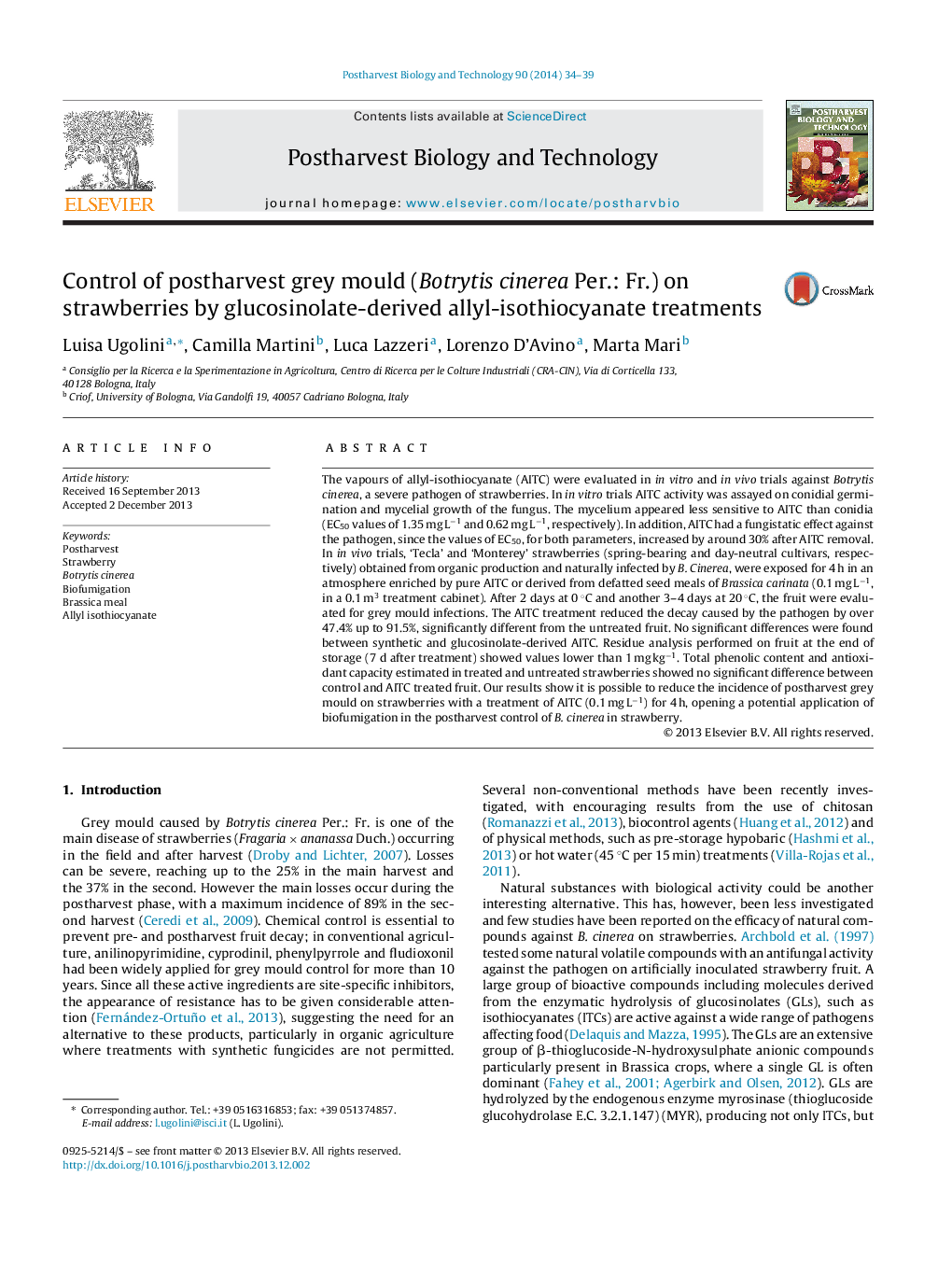| کد مقاله | کد نشریه | سال انتشار | مقاله انگلیسی | نسخه تمام متن |
|---|---|---|---|---|
| 4518139 | 1625004 | 2014 | 6 صفحه PDF | دانلود رایگان |

• AITC in vitro and in vivo activity on Botrytis cinerea was assayed.
• EC50 was 1.35 mg L−1 on mycelia growth and 0.62 mg L−1 on conidia germination.
• AITC was produced from Brassica carinata seed meal in in vivo trials on strawberries.
• A 4 h treatment at 0.1 mg L−1 reduced decay by over 47%, preserving antioxidant capacity.
• AITC residues found on strawberries were less than 1 mg kg−1.
The vapours of allyl-isothiocyanate (AITC) were evaluated in in vitro and in vivo trials against Botrytis cinerea, a severe pathogen of strawberries. In in vitro trials AITC activity was assayed on conidial germination and mycelial growth of the fungus. The mycelium appeared less sensitive to AITC than conidia (EC50 values of 1.35 mg L−1 and 0.62 mg L−1, respectively). In addition, AITC had a fungistatic effect against the pathogen, since the values of EC50, for both parameters, increased by around 30% after AITC removal. In in vivo trials, ‘Tecla’ and ‘Monterey’ strawberries (spring-bearing and day-neutral cultivars, respectively) obtained from organic production and naturally infected by B. Cinerea, were exposed for 4 h in an atmosphere enriched by pure AITC or derived from defatted seed meals of Brassica carinata (0.1 mg L−1, in a 0.1 m3 treatment cabinet). After 2 days at 0 °C and another 3–4 days at 20 °C, the fruit were evaluated for grey mould infections. The AITC treatment reduced the decay caused by the pathogen by over 47.4% up to 91.5%, significantly different from the untreated fruit. No significant differences were found between synthetic and glucosinolate-derived AITC. Residue analysis performed on fruit at the end of storage (7 d after treatment) showed values lower than 1 mg kg−1. Total phenolic content and antioxidant capacity estimated in treated and untreated strawberries showed no significant difference between control and AITC treated fruit. Our results show it is possible to reduce the incidence of postharvest grey mould on strawberries with a treatment of AITC (0.1 mg L−1) for 4 h, opening a potential application of biofumigation in the postharvest control of B. cinerea in strawberry.
Journal: Postharvest Biology and Technology - Volume 90, April 2014, Pages 34–39